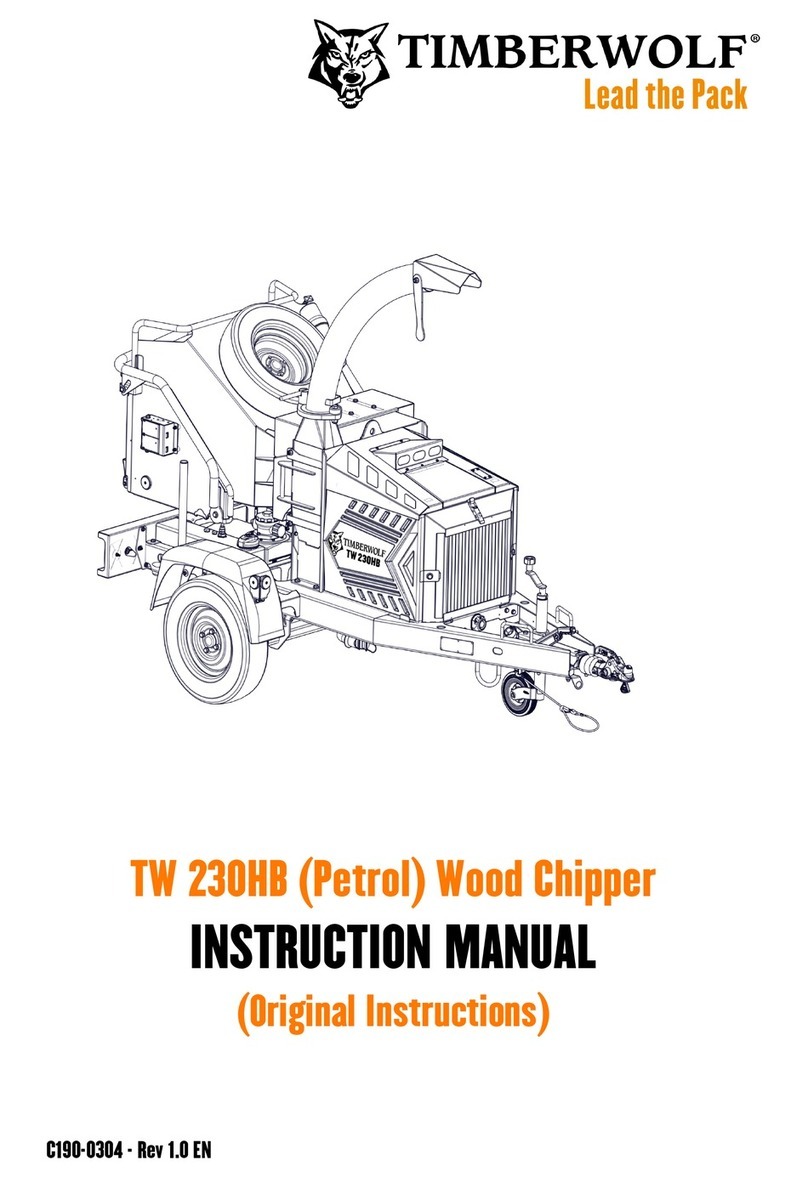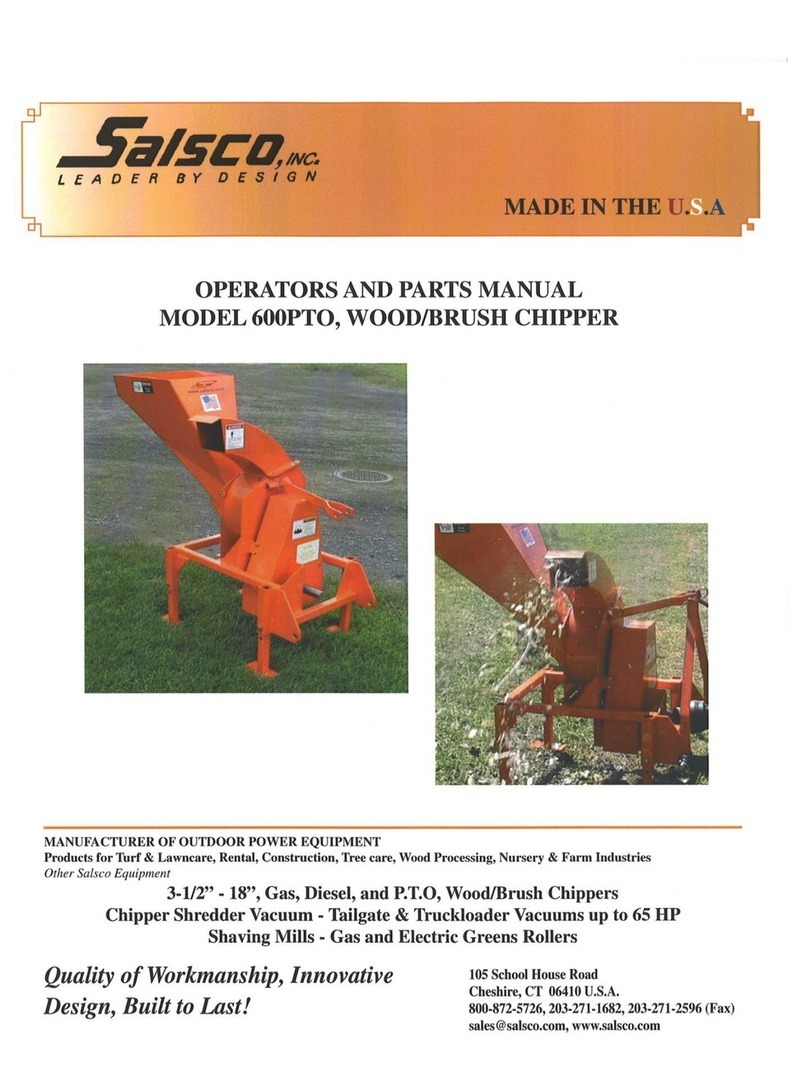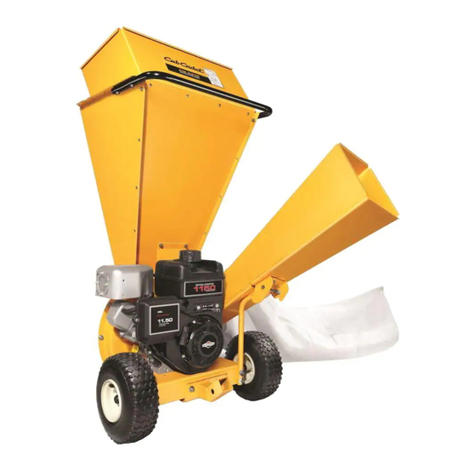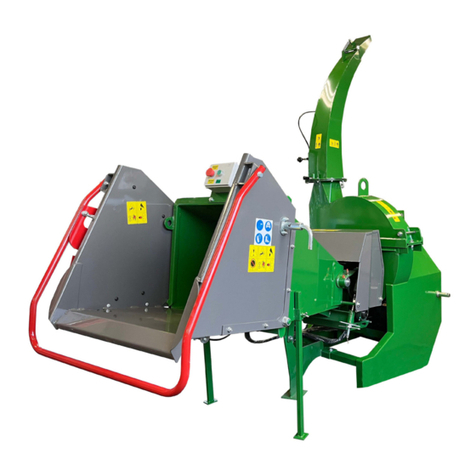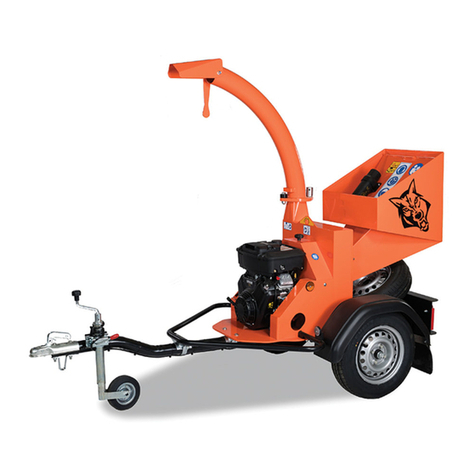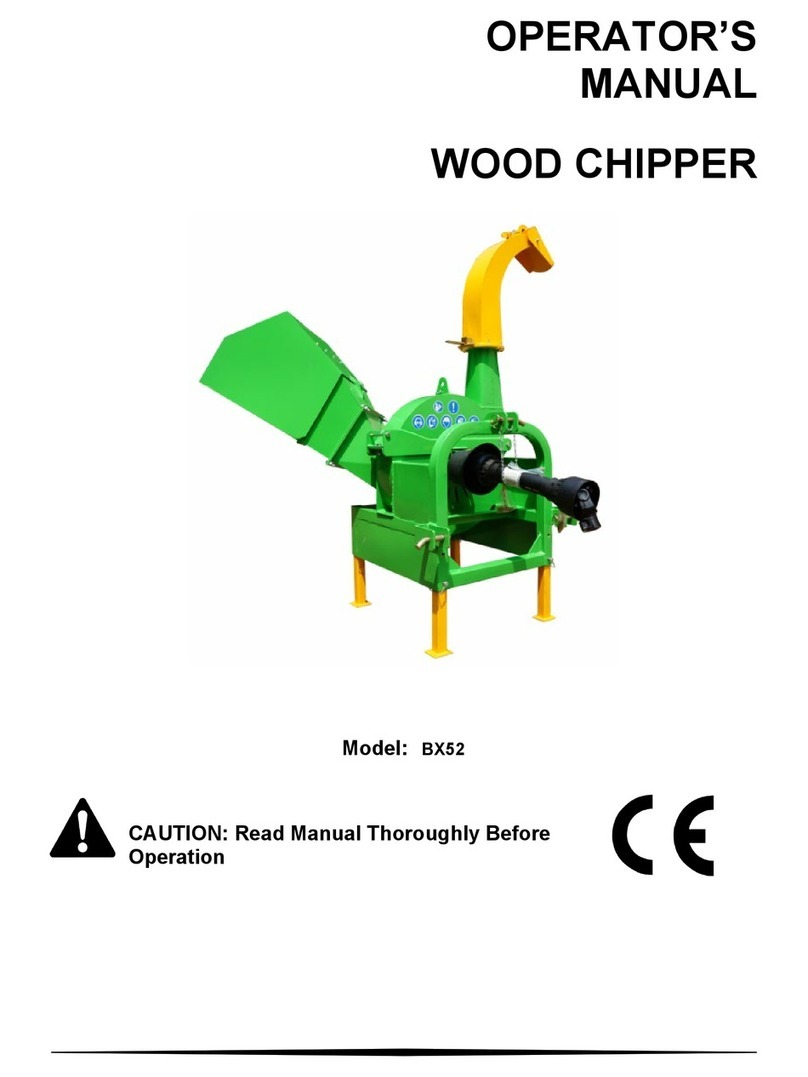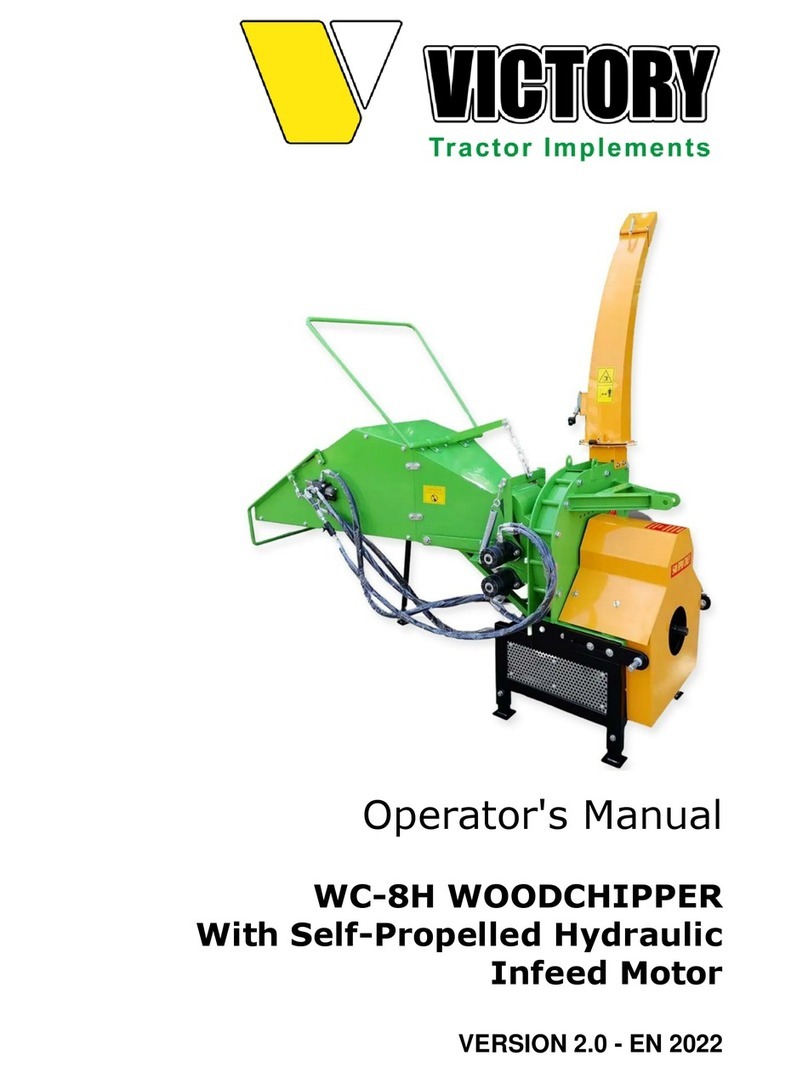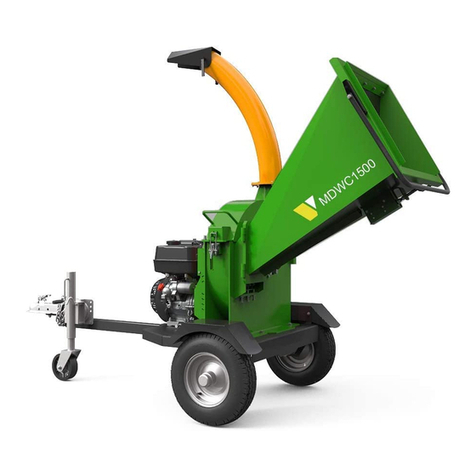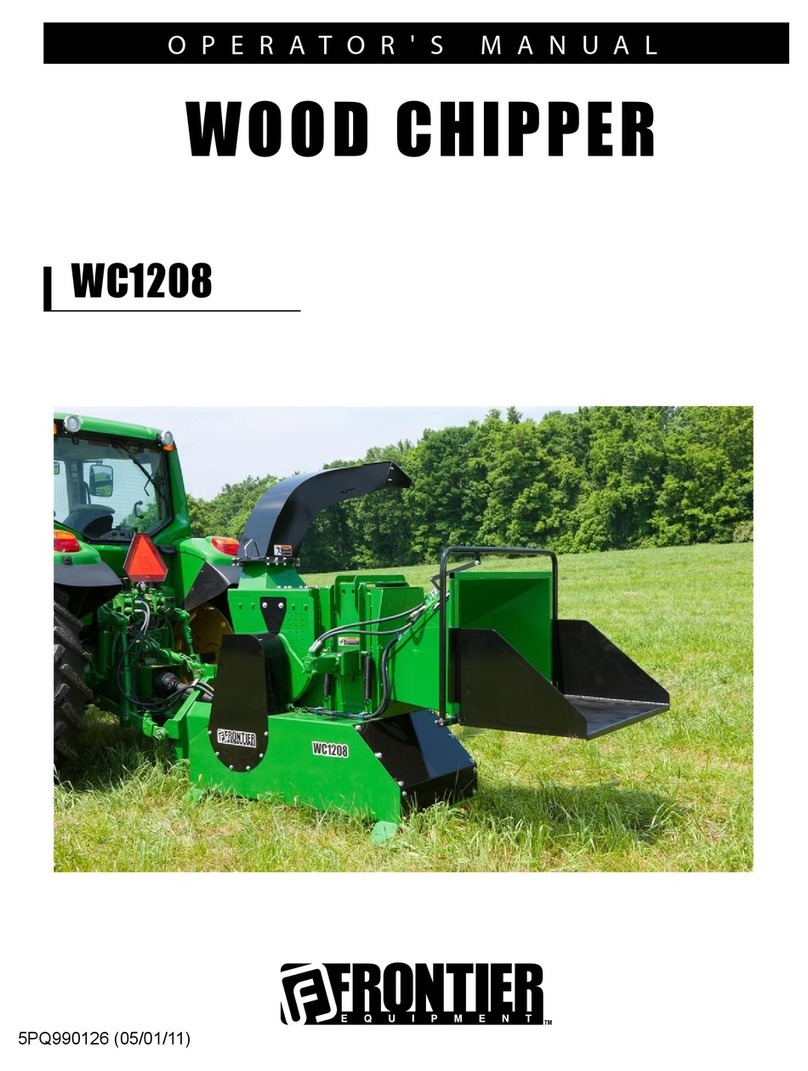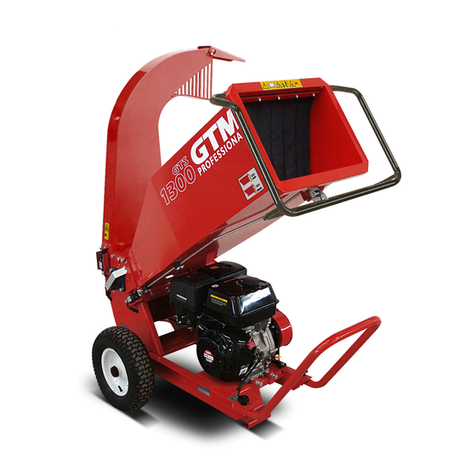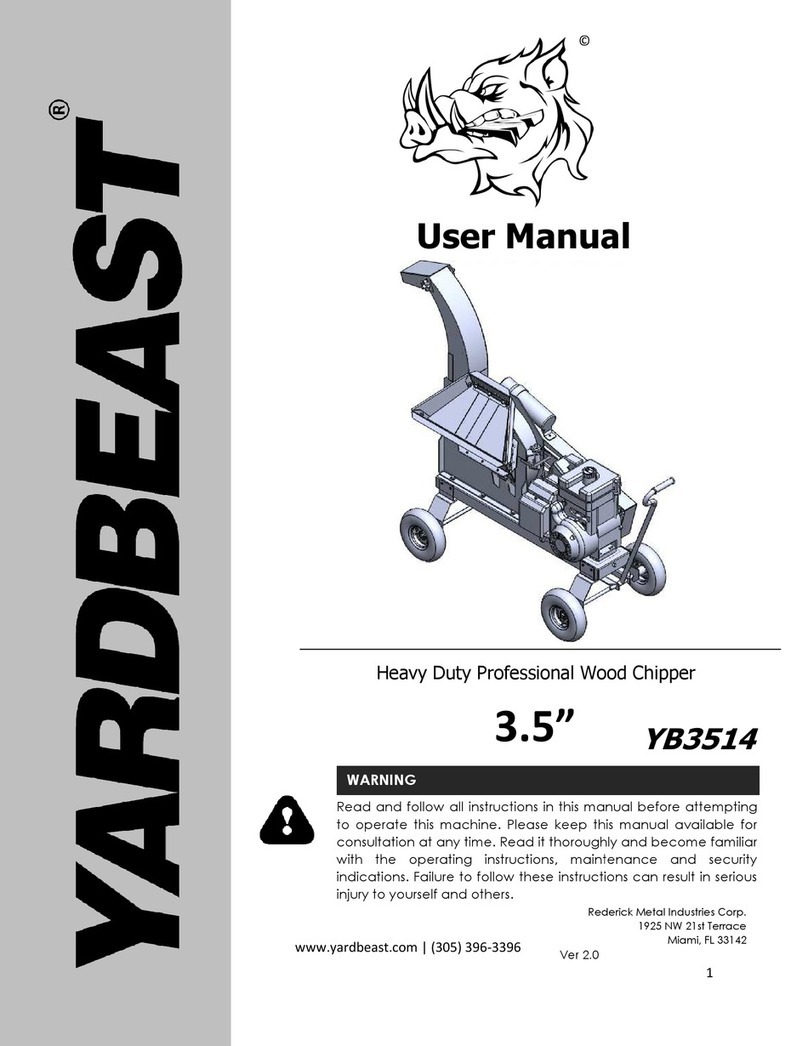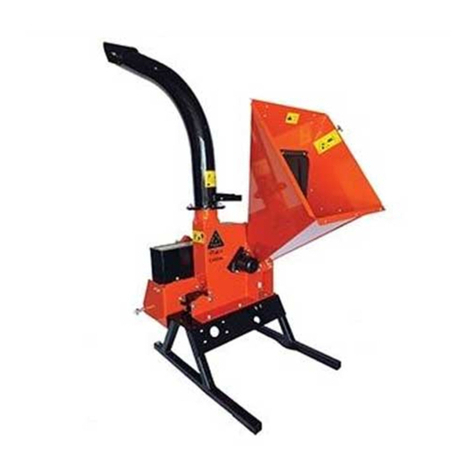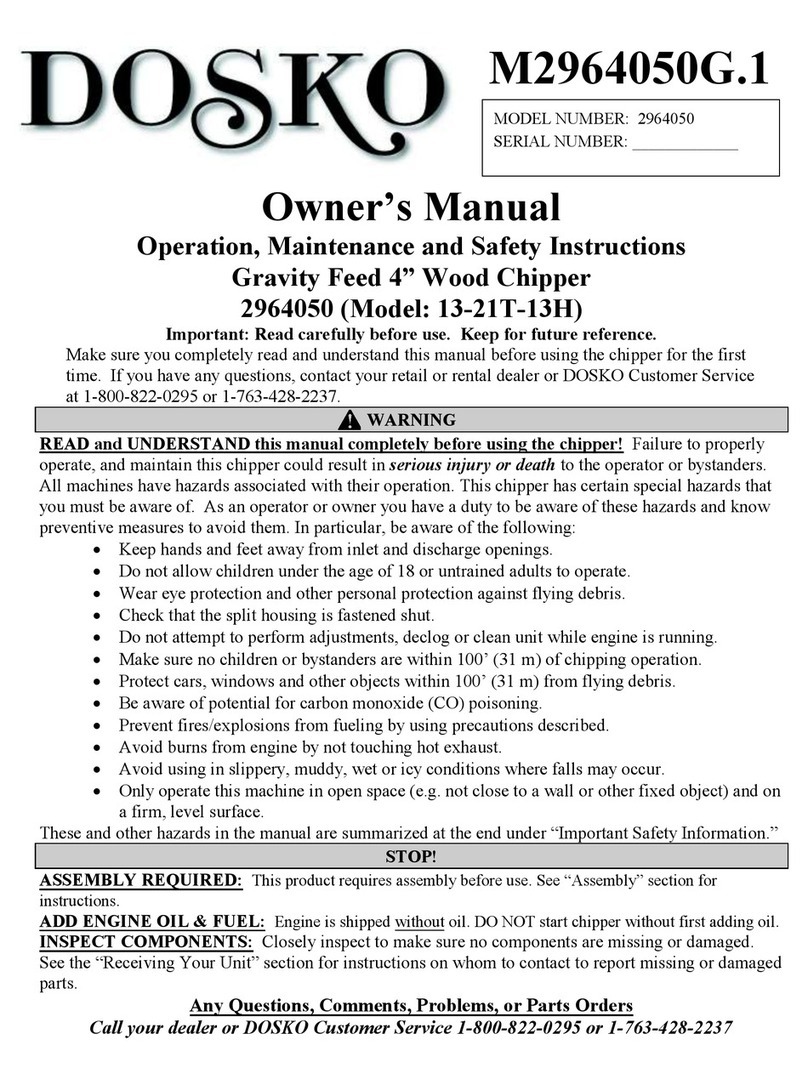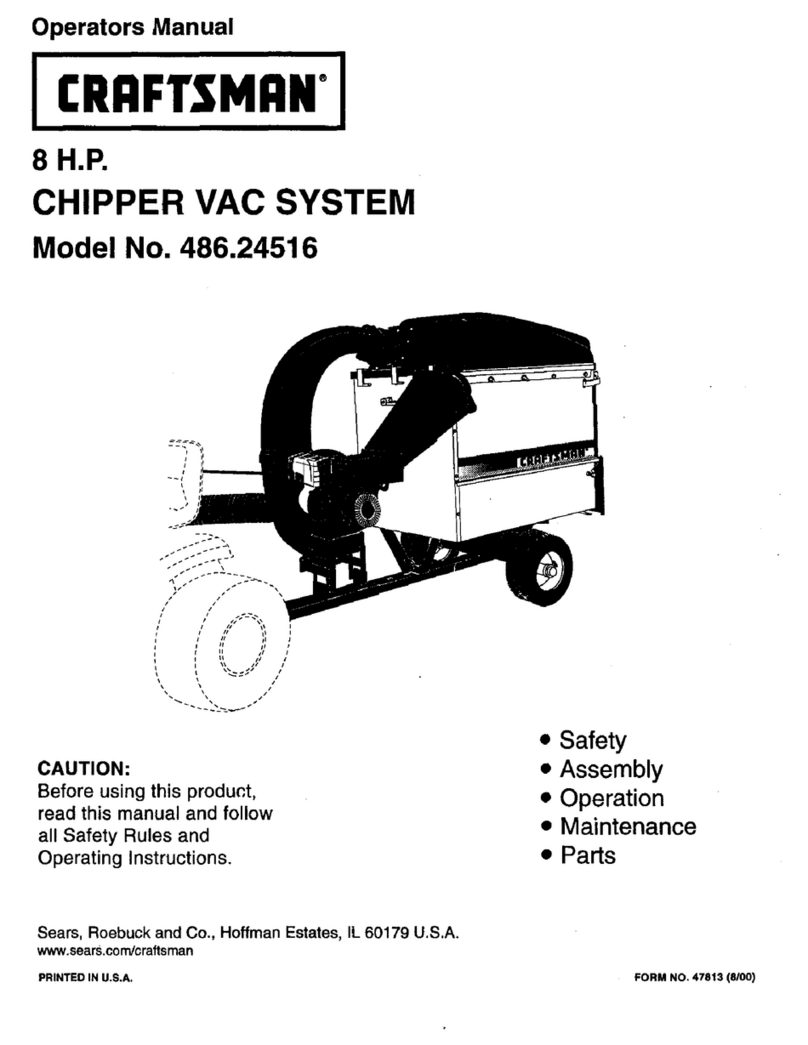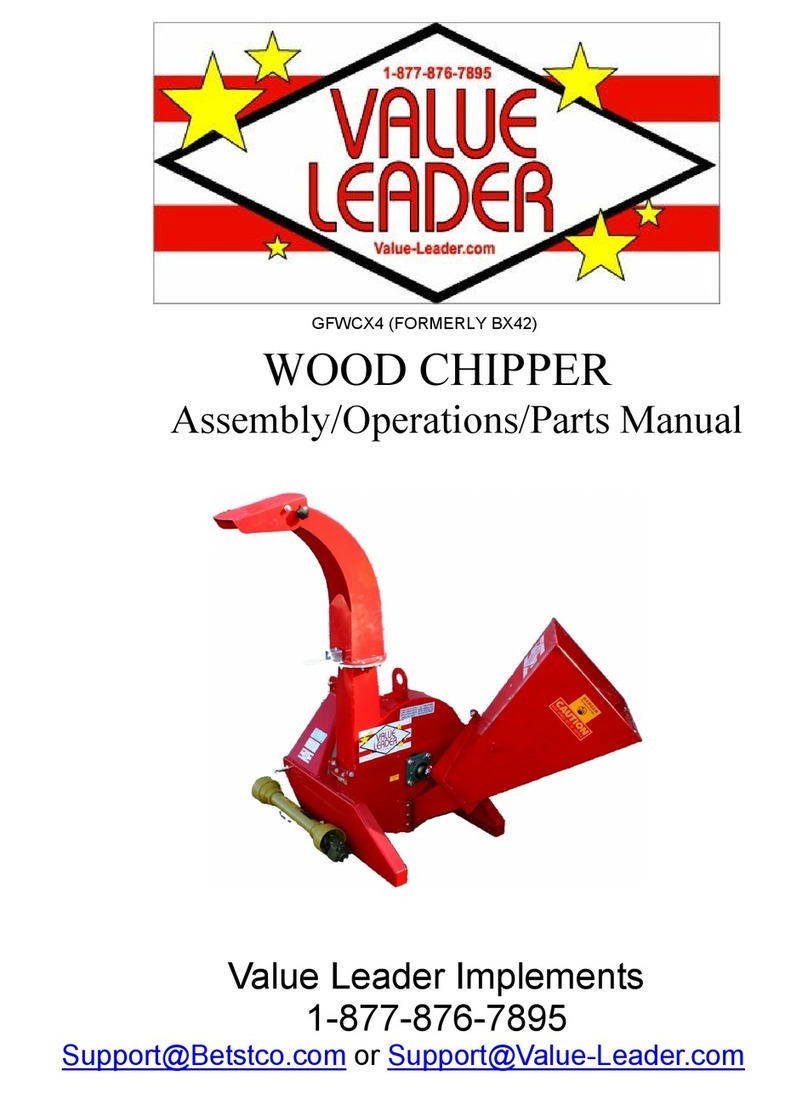
BX510H Assembly & Operating Instructions - Page 10 of 45 - Version 1.0
n Always disconnect the PTO, stop the tractor’s motor, and put the key in your pocket before attempting any
alterations, repairs, or adjustments.
n Keep hands, feet, clothing, and other extremities away from the hopper (infeed bin) and any power-driven
parts. Wear snug-fitting clothing to avoid entanglement with moving parts.
n Do not wear loose clothing when working around the woodchipper. Personal injury can occur if someone or
something turns the flywheel over while checking the knives or adjusting the cutter bar.
n Point the discharge chute away from persons, doorways, sidewalks, or areas obstructing your view. Point the
chute downwind when possible. This will keep the chips from blowing back in the operator’s direction.
2.5 SAFETY PRECAUTIONS CONTINUED FOR TRACTOR AND/OR
LOADER (IF EQUIPPED)
n Read the tractor and/or loader operator's manual to learn how to safely operate your tractor and/or loader.
Failure to do so could result in severe injury, death, and equipment damage.
n The tractor is recommended to be equipped with a Rollover Protective System (ROPS) and a seat belt and
that you use the belt for all loader operations.
n Add wheel ballast or front weight for stability.
n Move wheels to the tractor manufacturer's most comprehensive recommended settings to increase stability.
n Use a tractor with a wide front axle rather than tricycle front wheels for better stability.
n Always move and turn the tractor at low speeds.
n Stop the tractor’s engine, place the transmission in park mode (or neutral), engage the parking brake, lower
loader arms to the ground, cycle all hydraulic controls to relieve pressure, and allow machine moving parts to
stop. Remove the ignition key to prevent an unauthorized person from starting the engine before
dismounting the tractor or serving, repairing, or making adjustments to the equipment.
n Wear personal protective equipment (PPE), including but not limited to protection for eyes, ears, lungs,
head, hands, and feet when operating, servicing, or repairing equipment.
n Avoid wearing loose clothing or jewelry that may catch and entangle equipment moving parts.
2.5.1 Driveline Safety Checklist
Driveline Specifications
The first step toward safe applications is to specify and test the driveline to operate appropriately under
expected field conditions.
n Specify and test the proper size joints and telescoping members based on the power required by the
implement, rotation speed, joint angles, shock loads, and expected lifetime.
n Test the hitch geometry to prevent the driveline from:
• Extending beyond the recommended maximum length.
• Bottoming out.
• Reaching a position that allows universal joints to lock.
• Exceeding the maximum allowable angle for the constant velocity of the universal joints.
You can find information concerning these parameters in all driveline manufacturer’s catalogs.
n Specify and test telescoping members to allow the lowest possible thrust loads, considering the expected
working conditions.
n Specify and test torque limiters to control excessive shock loads.
n Specify and test overrunning clutches to prevent inertial loads from overpowering the tractor.
